Shia Hashd al Sha'abi Ordered to Leave Shingal
 8/11/2018 10:03:44 AM
8/11/2018 10:03:44 AM
5117 View
Dr. Amy L. Beam
+
-
As of August 2018, Shingal is being protected by the Iraqi Police, the Iraqi Army, the Hashd al Sha'abi, volunteers of men in Kocho and Tal Qassab, the Ezidixan forces, and the YPG. General Najim al Jubouri is commander of all security forces for Nineveh which includes Mosul, Rabia, Tal Afar, and Shingal. His headquarters is in Mosul.
Shia Hashd al Sha'abi
This week the Ministry of Defense in Baghdad announced that the Shia Hashd al Sha'abi will withdraw completely in ten days from Shingal, Rabia, and Zumar and relocate to Speicher which was the scene of a massacre of 1,566 Shia Iraqi Air Force cadets by ISIS in 2014.
They have been stationed inside Shingal city, at checkpoints on the highway, and at the Syrian border. This week on the border of Syria, Shia Hashd al Sha'abi disassembled their portable cabins which they had built less than one month ago.
The Hashd al Sha'abi, also known as Popular Mobilization Forces (PMF), was created in 2014 by Iran. Iraq government gave approval for them to enter Iraq to defeat ISIS. Many Iraqis joined the Hashd al Sha'abi. In May 21-28, 2017, several hundred Ezidi forces left Peshmerga and joined Hashd al Sha'abi to clear ISIS out of their villages on the south side of Shingal Mountain. In 2017, the Iraqi Ministry of Defense officially brought the Hashd al Sha'abi under its command and pays their salaries.
However, the Hashd al Sha'abi command structure includes Shia leaders Said Muktar with Hadi Amorie in Baghdad headquarters, Abu Mahadi al Muhandis in charge of Shingal, and Falah al Fayatha in charge of all Iraq. The top leader of Hashd al Sha'abi is Major General Qassim Soleimani, the Iranian commander of QUDs forces.
Ezidi Hashd al Sha'abi
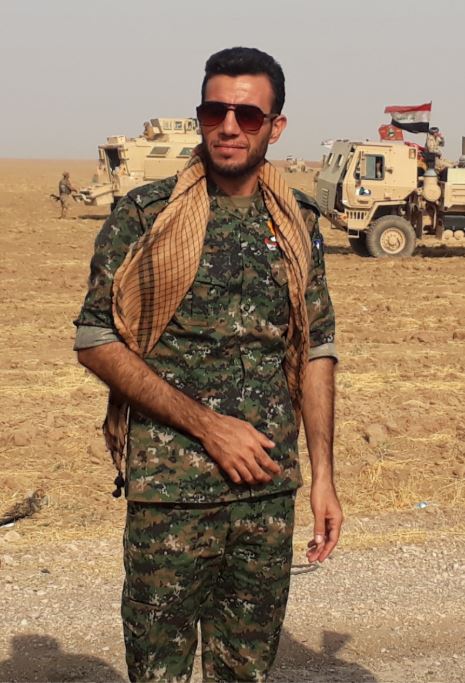
Khal Ali, Ezidi Hashd al Sha'abi
Khal Ali Serhan Issa from Khanasor, Shingal, is the leader of the Ezidi Hashd al Sha'abi headquartered inside of Shingal city. He commands 100 soldiers who man most of the checkpoints inside Shingal city and at the empty Ezidi villages. He and his forces will remain in Shingal at the checkpoints and on patrol in the villages.
Sunni Hashd al Sha'abi
Sunni Hashd al Sha'abi will continue to guard their villages in and near Rabia. These villages include Chiree, Siba, Sayer, Khazuka, Rejim Avid, Bazoona, Hella, and Naim. The mukhtar (mayor) of Khazuka is the leader of the Jayish tribe, some of whom are accused of joining ISIS to attack and kill Ezidis on the north side of Shingal Mountain, on and before August 3, 2014. Sunni Hashd al Sha'abi are also stationed in Karowan village and Baaj, just south of Gir Zerick. Baaj is the city from which ISIS launched their attack on Shingal, beginning with Gir Zerick at 2:10 AM, August 3, 2014.
Iraqi Police

Col. Ziad Hussein Barjis is the manager of Iraqi Police in Shingal. His headquarters is in Shingal city. He has been there since Nov. 13, 2015, when Shingal city was cleared of ISIS. He was promoted to colonel July 14, 2018. Col. Ziad commands 600 Iraqi police. Their authority will be inside the city unless they are called to the villages.
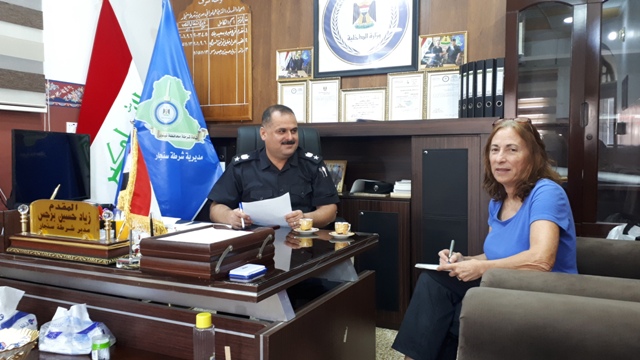
Col. Ziad Hussein Barjis is the manager of Iraqi Police in Shingal.
Iraqi Army
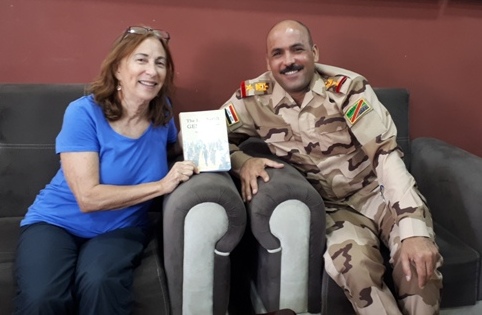
Col. Col. Saif Saad, second in command, Iraqi Army in Shingal
Col. Omar Alaa is the Iraqi Army commander in Shingal. His second in command is Col. Saif Saad who has been headquartered in Shingal city since November 2017. There are 400 Iraqi Army soldiers in Shingal. Their authority is outside of the city of Shingal. Most of them are stationed on the border between Iraq and Syria south of Shingal Mountain. They will take over the patrol and checkpoints of Shia Hashd al Sha'abi when they withdraw.
Ezidixan Forces
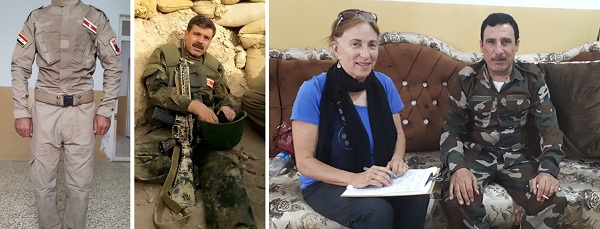
Ezidixan uniform Haider Shesho Amy L Beam with Hussein Bashur, Ezidixan manager, Shingal
Haider Shesho is the commander of 7,000 Ezidixan forces (formerly known as HBS). Hussein Bashur is manager of the Ezidixan headquarters office in Shingal city.
One thousand of these men are on active duty and are officially paid from Baghdad central government which pays Peshmerga. Peshmerga then pays the monthly salaries to the Ezidixan forces who are officially recognized.
Another 6,000 volunteers are on stand-by to defend Shingal if necessary or when Shingal becomes a semi-autonomous region similar to Kurdistan. Their position is that Ezidis will not return to live in Shingal if they are under the control of either the Iraqi Army or Peshmerga from Kurdistan.
They are dedicated to saving Ezidi land which includes Shingal, Bashiqa, Lalish, and wherever one Ezidi family is living. The 1,000 active forces are living with their families in Shingal and also in IDP camps in Kurdistan. They do not maintain any checkpoints.
Independent Ezidis in Kocho and Tal Qassab
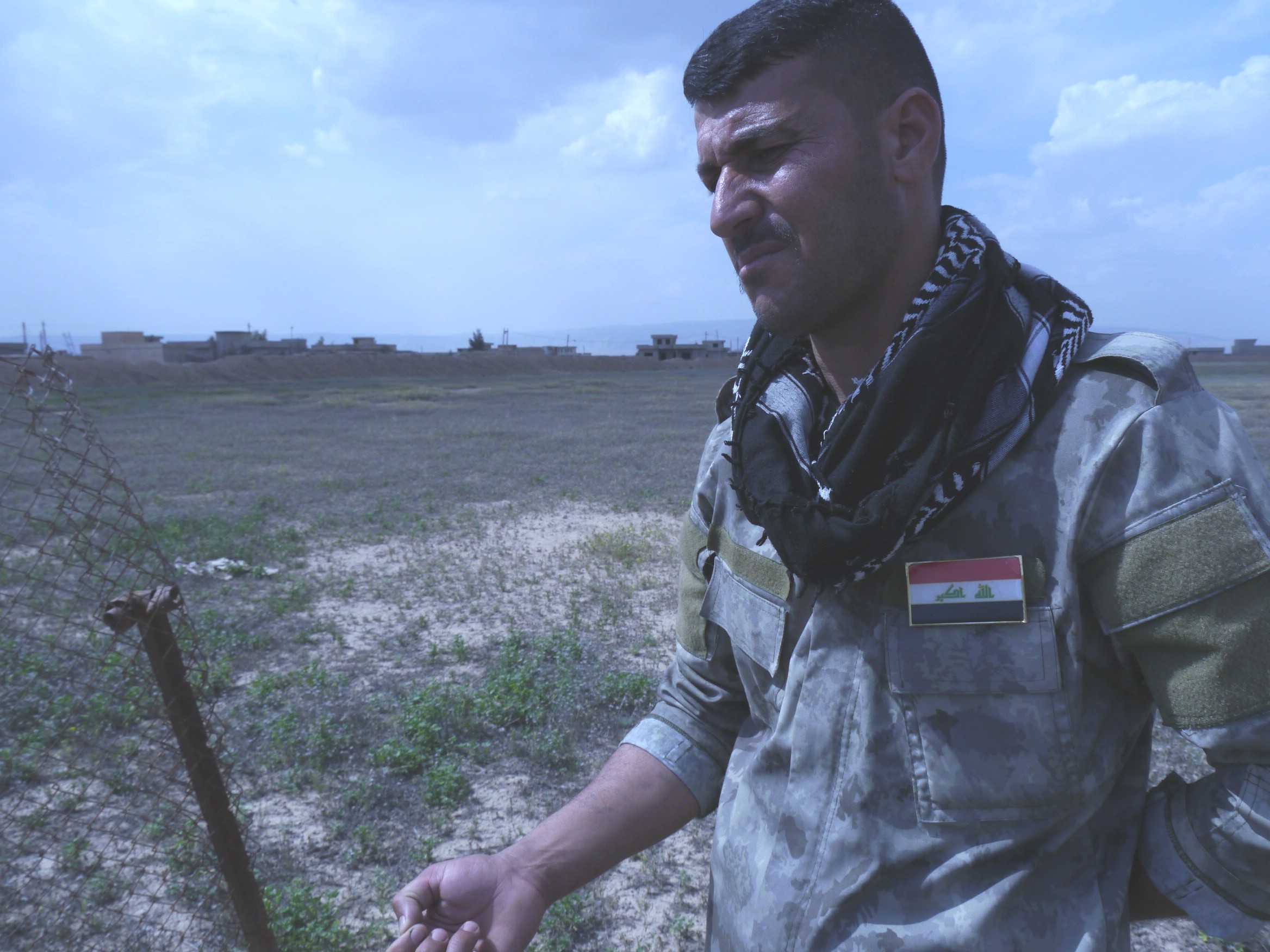
Khalid Murad Pissee looking at Kocho mass grave site where he was shot
Naif Jaso was the mukhtar of Kocho when ISIS attacked it, August 15, 2014. He was not in Kocho on that day. He now lives in Tal Qassab, Shingal, and is the leader of volunteer men who protect and patrol their villages of Tal Qassab and Kocho. He led his unit of Ezidis in the liberation of these villages May 21-26, 2017. They do not receive salaries. They depend on donations. Some people, especially shepherds, have returned to live in Tal Qassab which recently got government electricity restored.
Kocho remains empty as a memorial to the men who were killed there by ISIS in execution lines and the women and children who were kidnapped, sold, and raped. A handful of men, led by Khalid Murad Pissee, who survived the execution lines or were not in Kocho on that black day now guard the bones of their families and maintain a checkpoint at the entrance to Kocho. A memorial event will be held in Kocho on August 15.
YPG
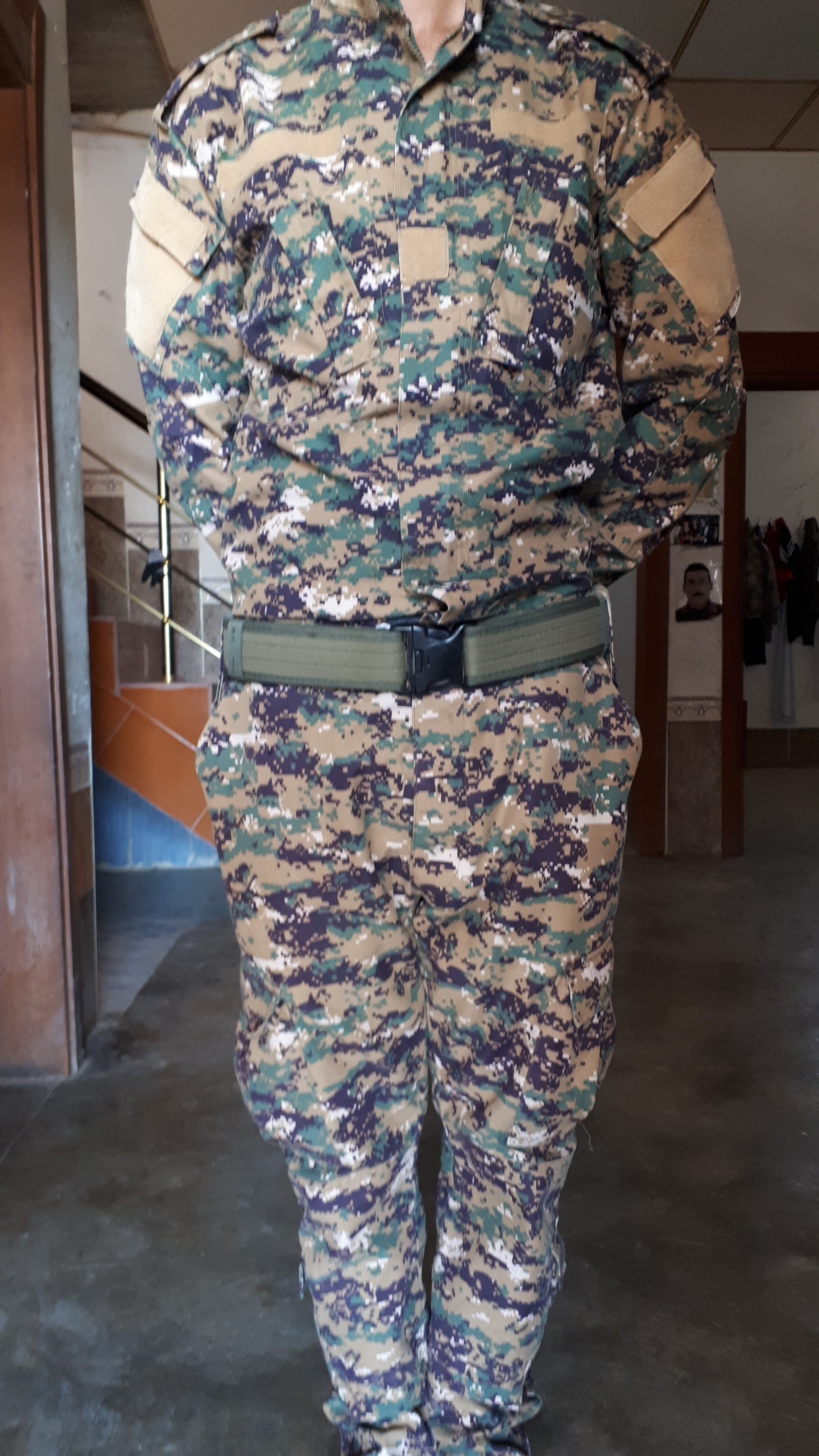
YPG uniform
The YPG forces include Ezidis and Kurds from Syria and Iraq. They maintain several observation points with armed guards inside Shingal city. They are not checking IDs or flying the YPG flag. All posters of Apo (Abdullah Ocalan), the PKK leader, have been removed for months. They do display billboard posters of YPG and YPJ martyrs killed in the fight to defeat ISIS. These martyrs include Ezidis.
YPG and YPJ also maintain checkpoints in the village of Skeenia on the southwest side of Shingal Mountain. The Iraqi Army plans to take over control of Skeenia.
Shingal Remains a Disputed Territory
Shingal has been a disputed area in northern Iraq for years. ISIS attacked the Ezidis in Shingal on August 3, 2014. The Peshmerga withdrew to Kurdistan, then the PKK and a new group of mostly Ezidi Peshmerga returned and cleaned Sinjar city of ISIS on November 13-15, 2015. Peshmerga wanted to push forward and retake the Ezidi villages, but Baghdad and the US-led Coalition ordered them to stop.
After the Kurdistan referendum for independence, September 25, 2017, Peshmerga was pushed out of Shingal by the Iraqi Army and Hashd al Sha'abi. The Iraqi Army and the YPG forces continue to guard the border between Shingal and Syria against ISIS.
Ezidis continue to campaign for their own semi-autonomous region under Ezidi defense forces. Without their own region, nearly every Ezidi will choose to emigrate to another country.
Dr. Amy L. Beam is author of The Last Yezidi Genocide. She has been assisting the Yezidis since August 2014 when ISIS attacked them in Shingal. To order her book email her at amybeam@yahoo.com.